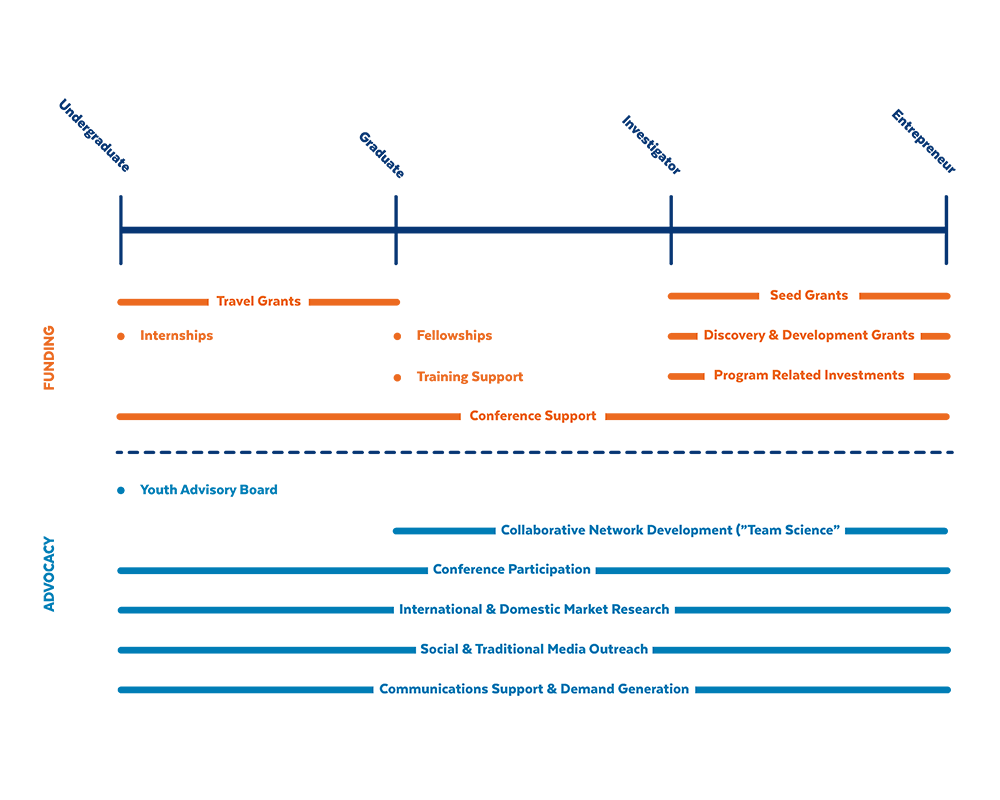|
We spend a lot of time at Male Contraceptive Initiative thinking about how best to accelerate the research and development of novel methods of non-hormonal, reversible male contraception. It is, unfortunately, a field that simply does not receive enough attention or funding, so it is up to us to ensure that our investments have the greatest impact possible, both in the short-term and the long-term. As discussed in a previous post, we are likely 10-15 years away from the first non-hormonal, reversible male contraceptive method being available to the general public, despite the media coverage one may read. There are many reasons for this, but essentially it all boils down to ensuring that these new methods are not only effective, but safe as well. These timelines can make it challenging to keep people engaged and to provide those interested in the field reason for optimism. This is particularly true for students and young professionals considering careers in scientific research. There are other challenges (e.g., cancer, HIV/AIDS, etc.) that receive tremendous amounts of funding due to the immediacy of the need and the benefit to mankind that resolving them represents; these approaches aim to solve or prevent a threat to an individual’s health. With contraception, we’re trying to “pause” a biological function or functions that lead to fertility. Taking it a step further, the methods Male Contraceptive Initiative supports and advocates for seek to not only pause this function but to do so in a manner that is reversible, adding to the degree of difficulty. Couple this with the inherent complexity of male reproduction (i.e., men produce ~1,500 sperm per second during spermatogenesis) and you have a significant challenge at hand. The complexity of the challenge at hand and a lack of investment due to dwindling interest from the pharmaceutical industry has resulted in an arid landscape for the development of male contraceptive methods. Over the past decades, many scientists have shifted their focus to other areas of research with more promising potential for funding. The ripple effect of this is that many young trainees fail to consider male contraception as a viable career path due to a lack of opportunities in the field. A key aspect of Male Contraceptive Initiative’s funding and advocacy strategy seeks to address the need for more professional opportunities in the field by providing:
Our funding and advocacy efforts ensure short-, mid-, and long-term impact.Through this complementary strategy of funding and advocacy, with a focus on near-, mid-, and long-term impact, we have developed a sustainable roadmap of support for the field. This allows your contributions to be invested in the most impactful way possible, support the continuation and growth of male contraceptive research as an ecosystem so that our shared vision of a world with an equitable contraceptive method mix is realized.
We encourage you to join us on this journey by donating to Male Contraceptive Initiative and by engaging with us. Together we will change the world!
0 Comments
Your comment will be posted after it is approved.
Leave a Reply. |
Categories
All
Archives
June 2024
|
|
|
Donate to Male Contraceptive InitiativeYour generous donation makes a difference!
|
© Male Contraceptive Initiative. All rights reserved.



 RSS Feed
RSS Feed
